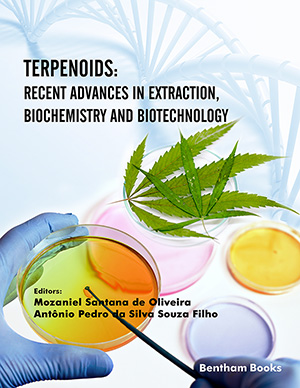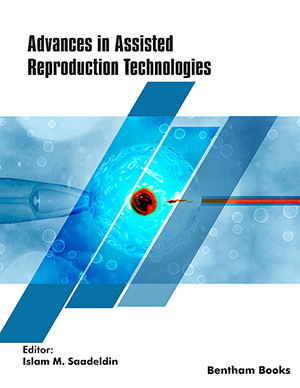
Abstract
A total of 596 fungal endophytes were isolated from ~2000 bark and twig samples of five medicinal plants from Clusiaceae family of Western Ghats, India, during three seasons viz., rainy, winter and summer. The isolated endophytes belonged to different fungal classes which were Ascomycetes (0.6%), Coelomycetes (19.3%), Hyphomycetes (52.1%), Zygomycetes (1.3%) and Sterile mycelia (0.7%). The most frequently recovered endophytes were Pestalotiopsis sp., Trichoderma sp., Myrothecium sp., Acremonium sp., Fusarium oxysporum and Aspergillus niger. A few other species recovered were Aspergillus spp., Ascochyta sp., Botrytis cinera, Botryodiplodea theobromae, Chaetomium sp., Cladosporium sp., Colletotrichum spp., Fusarium spp., Morteirella sp., Nigrospora oryzae, Penicillium sp., Paecilomyces sp., Phyllosticta sp. and Verticillium sp. Endophytes recovery was significantly more during the rainy season than winter and summer seasons.
Keywords: Clusiaceae, diversity, endophytic fungi, seasons, Western Ghats.
Current Biotechnology
Title:Endophytic Fungal Assemblages in Calophyllum and Garcinia spp. of Clusiaceae Family in Western Ghats, India
Volume: 1 Issue: 2
Author(s): Karmakar Ruma, Sekhar Shailasree, Kumara K.K. Sampath, Siddapura Ramachandrappa Niranjana and Harischandra Sripathy Prakash
Affiliation:
Keywords: Clusiaceae, diversity, endophytic fungi, seasons, Western Ghats.
Abstract: A total of 596 fungal endophytes were isolated from ~2000 bark and twig samples of five medicinal plants from Clusiaceae family of Western Ghats, India, during three seasons viz., rainy, winter and summer. The isolated endophytes belonged to different fungal classes which were Ascomycetes (0.6%), Coelomycetes (19.3%), Hyphomycetes (52.1%), Zygomycetes (1.3%) and Sterile mycelia (0.7%). The most frequently recovered endophytes were Pestalotiopsis sp., Trichoderma sp., Myrothecium sp., Acremonium sp., Fusarium oxysporum and Aspergillus niger. A few other species recovered were Aspergillus spp., Ascochyta sp., Botrytis cinera, Botryodiplodea theobromae, Chaetomium sp., Cladosporium sp., Colletotrichum spp., Fusarium spp., Morteirella sp., Nigrospora oryzae, Penicillium sp., Paecilomyces sp., Phyllosticta sp. and Verticillium sp. Endophytes recovery was significantly more during the rainy season than winter and summer seasons.
Export Options
About this article
Cite this article as:
Ruma Karmakar, Shailasree Sekhar, K.K. Sampath Kumara, Ramachandrappa Niranjana Siddapura and Sripathy Prakash Harischandra, Endophytic Fungal Assemblages in Calophyllum and Garcinia spp. of Clusiaceae Family in Western Ghats, India, Current Biotechnology 2012; 1 (2) . https://dx.doi.org/10.2174/2211550111201020109
| DOI https://dx.doi.org/10.2174/2211550111201020109 |
Print ISSN 2211-5501 |
| Publisher Name Bentham Science Publisher |
Online ISSN 2211-551X |
Call for Papers in Thematic Issues
Age Reversal using transient epigenetc reprogramming with the OSK Yamanaka Factors
Aging is a complex biological process characterized by a gradual deterioration of physiological functions and an increased vulnerability to disease. Recent advancements in the field of regenerative medicine have shown promising avenues for combating aging. Among these, partial epigenetic reprogramming, specifically utilizing the Yamanaka factors, has been shown to reverse ...read more
Bioinformatic Analysis of Regulated Cell Death in Chronic and Acute Inflammatory Diseases
In the intricate realm of inflammatory diseases, delving into the complexities surrounding regulated cell death emerges as an indispensable and forefront area of exploration. Understanding the intricacies of how cells are regulated to undergo death in inflammatory conditions not only represents a pivotal frontier in biomedical research but also holds ...read more
Feeding a vegan World
The Eat-Lancet Planetary diet recommends at least 2/3 plant and microbial sources in the food protein portion. Such diet is recommended against obesity, cancer and to limit global warming, and might get more and more incentives in the next years. We thus need massive amounts of Plant-based food, and the ...read more
Leveraging AI for personalized pediatric neurodevelopmental support
Personalized medicine in pediatrics is a moving target dedicated to finding the right treatment, at the right time, for each individual child in each stage of development. Child development is a highly personal process, unique to each individual, something which is even more apparent in the development of children with ...read more
Related Journals
 2
2
- Author Guidelines
- Graphical Abstracts
- Fabricating and Stating False Information
- Research Misconduct
- Post Publication Discussions and Corrections
- Publishing Ethics and Rectitude
- Increase Visibility of Your Article
- Archiving Policies
- Peer Review Workflow
- Order Your Article Before Print
- Promote Your Article
- Manuscript Transfer Facility
- Editorial Policies
- Allegations from Whistleblowers
- Announcements
Related Articles
-
Safety Profiles and Pharmacovigilance Considerations for Recently Patented Anticancer Drugs: Cutaneous Melanoma
Recent Patents on Anti-Cancer Drug Discovery Recent Patents and Emerging Therapeutics in the Treatment of Allergic Conjunctivitis
Recent Patents on Inflammation & Allergy Drug Discovery Natural Products as Leads for Tuberculosis Drug Development
Current Topics in Medicinal Chemistry Inhibition of Epithelial-mesenchymal Transition in Response to Treatment with Metformin and Y27632 in Breast Cancer Cell Lines
Anti-Cancer Agents in Medicinal Chemistry Epithelial Mesenchymal Transition in Cancer Progression: Prev entive Phytochemicals
Recent Patents on Anti-Cancer Drug Discovery Is there any Role for Splenectomy in Adulthood Onset Chronic Immun e Thrombocytopenia in the Era of TPO Receptors Agonists? A Critic al Overview
Cardiovascular & Hematological Disorders-Drug Targets Pharmacological Profile and Pharmacogenomics of Anti-Cancer Drugs Used for Targeted Therapy
Current Cancer Drug Targets Meet Our Editorial Board Member
Current Cancer Drug Targets Antitumor Effects of Interferon-Alpha on Cell Growth and Metastasis in Human Nasopharyngeal Carcinoma
Current Cancer Drug Targets Biochemical and Functional Properties of a Lectin Purified from Korean Large Black Soybeans — A Cultivar of Glycine Max
Protein & Peptide Letters Molecular Pathways of Interferon-Stimulated Gene 15: Implications in Cancer
Current Protein & Peptide Science Marine Sponges: Potential Sources of New Antimicrobial Drugs
Current Pharmaceutical Biotechnology Occurrence and Severity of Adverse Reactions of Immune Checkpoint Inhibitors (PD-1 and PD L1) Based on Mordovian Dispensary Data Analysis
Current Cancer Therapy Reviews An Intimate Alliance of DNA-Damage Response Network with Cell-Cycle Checkpoints Amid Events of Uncontrolled Cellular Proliferation: A Mini- Review
Endocrine, Metabolic & Immune Disorders - Drug Targets Targeting Tumor Suppressor p53 for Cancer Therapy: Strategies, Challenges and Opportunities
Current Drug Targets Editorial: Signalling Pathways in Virus-caused Cancers
Current Cancer Drug Targets Withdrawal Notice: Recent Developments in Anti-Cancer Activity of Compounds Containing the Thioether Group
Anti-Cancer Agents in Medicinal Chemistry Radiotherapy and Its Impact on the Nervous System of Cancer Survivors
CNS & Neurological Disorders - Drug Targets Translational Research: A Future Strategy for Managing Squamous Cell Carcinoma of the Head and Neck?
Anti-Cancer Agents in Medicinal Chemistry Adverse Effects and Drug Interactions of Biologic Agents
Anti-Inflammatory & Anti-Allergy Agents in Medicinal Chemistry





















